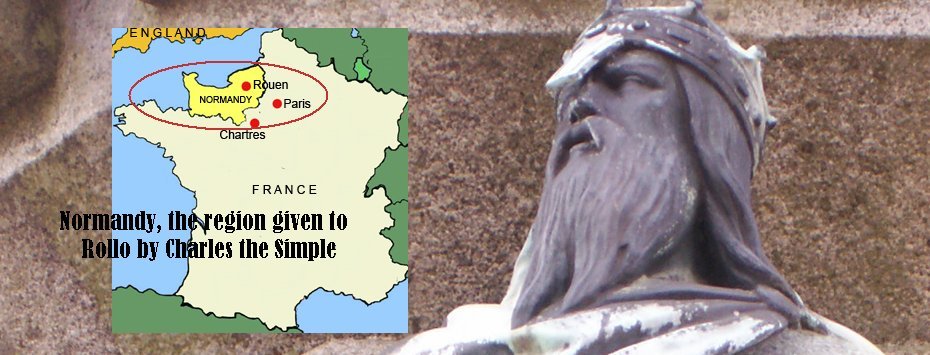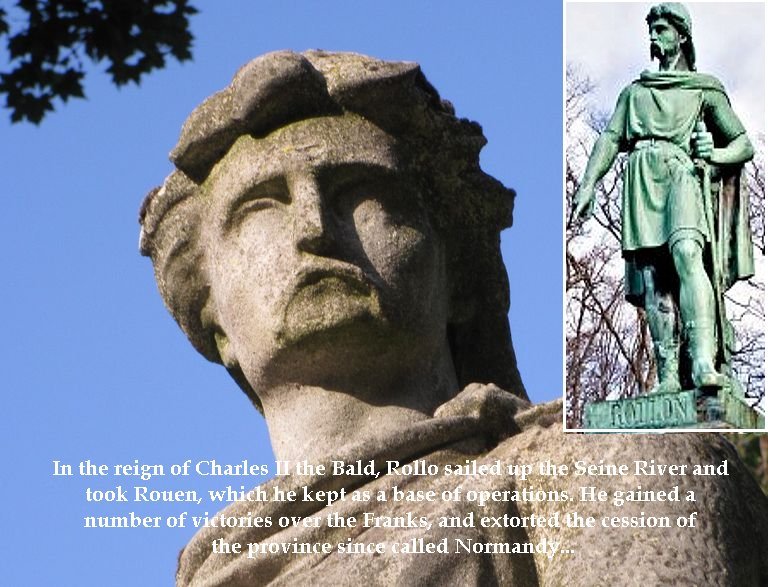Rollo: Viking Sea Lord, Chieftain, Lone Wolf And The First Ruler Of Normandy
A. Sutherland - AncientPages.com - At the height of their glory, the Vikings formed many new Scandinavian dynasties. At first, they were considered foreigners, but they eventually integrated with local communities, even religiously.
One of them was Rollo (also known as Gånge-Rolf), an ancestor of the famous William the Conqueror, who led the conquest of Normans to England and became king of the country in 1066.
Believed to have lived between 846 and 931 AD, the first historical account of Rollo detailed his leadership of the Vikings during their siege of Paris from 885 to 6 AD.
Mentioned in Icelandic sagas, as a man of high social status, Rollo is often referred to as Rolf the Walker ("Ganger-Hrolf, "in Old Danish) because he had such an imposing figure that his horse could not carry him and was obliged to travel on foot.
His impressive figure was richly decorated with golden arm rings, amulets, and the hammer of the god Thor. By a treaty in 911, the Viking chieftain, Rollo, and his followers were granted part of the French coast called Normandy (or the "land of the Normans"). In return, Rollo was to swear loyalty to King Charles the Simple, look to the defense of his domain, and be baptized as a Christian.
The Viking chieftain kept his bargain with the king, and the treaty was beneficial to them both. Rollo's presence in Normandy was legitimate; he settled in the city of Rouen, which he seized earlier, in 876, and there were no further Viking raids into Charles's territory and in times of emergency, Rollo sent his met-at-arms at Charles's disposal.
In his book "The Vikings," Robert Wernick mentions a local tradition that describes Rollo as a brutal man:
"…when some peasants sought the right to hunt and fish in Rollo's woods, lakes, and rivers, he dispatched his uncle, Count Rudolph, to cut off a hand and a foot of each of the would-be-poachers. But he was also sharp-witted and practical. He let himself be baptized, and he lost no time in restoring the churches that he and his fellow Vikings had sacked…"
Statue of Viking Rollo in Ålesund, Norway. Image credit: Nils Harald Ånstad.
"… It was later recounted that when he was on his deathbed, he asked to be buried in the cathedral of Rouen and he ordered large sums of gold to be given to Christian churches…"
He continued to reign over the region of Normandy until at least 928, according to a charter of 918. By the end of the century, these settlers spoke French and had lost their Scandinavian heritage.
Rollo was succeeded by his son, William Longsword (c. 893 -942), William, the second ruler of Normandy, from 927 until his assassination in 942. The offspring of Rollo and his followers became known as the Normans.
After the Norman conquest of England and their conquest of southern Italy and Sicily over the following two centuries, their descendants came to rule Norman England (the House of Normandy), the Kingdom of Sicily (the Kings of Sicily) as well as the Principality of Antioch from the 10th to 12th century, leaving behind a lasting legacy in the historical records of the European continent and even the countries of Near East.
Much Debate On Rollo's True Origin
Like most other figures dated to early history, also Rollo's roots are shrouded in mystery.
Medieval chronicles from Norway and Iceland assert that Rollo and another figure known as Gange-Rolv (also known as Rolv Ganger) were one and the same person. On the other hand, modern Danish historians do not agree with these claims and insist that Rollo was Danish.
In the spring of 2014, a report published by Michael R. Maglio stated that the DNA extracted from the remnants of Rollo’s descendants disclosed them to be of Danish origin. This theory was also criticized, and it was said that the researchers had misidentified corpses.
An 11th-century Benedictine monk and historian wrote: "Rollo sailed boldly from Norway with his fleet to the Christian coast." Likewise, the 12th-century English historian William of Malmesbury stated that Rollo was "born of noble lineage among the Norwegians."
Also, according to one legend, he was a Norwegian scion of a family that had left Norway as outlaws and arrived in northern Scotland to seek freedom and wealth. From there, he took part in many Viking raids, reaching the coast of England and France.
An entirely different account was given by a hisorian of early Norman history, Dudo of St. Quentin, born about 965, who claimed that Rollo and his brother, Gurim (or Gorm) were sons of an influential noble man in Dacia, a province covering the entire Nordic region (Dania and Suecia), which is the Medieval Latin names for Denmark and Sweden.
One of his great-grandsons was known as Robert the Dane.
Rollo's grave is at the Cathedral of Rouen. Image credit: Wikipedia
It is worth mentioning that Dudo’s version of events was partially echoed by the 12th century “Orkneyinga Saga, along with the Landnámabók ("Book of Settlements"). The latter is the medieval Icelandic written work that describes in considerable detail the settlement (landnám) of Iceland by the Norse in the 9th and 10th centuries CE.
Also, according to one legend, he was a Norwegian scion of a family that had left Norway as outlaws and arrived in northern Scotland to seek freedom and wealth. From there, he took part in many Viking raids, reaching the coast of England and France.
Among historians, Rollo - as the great-great-great-grandfather of William the Conqueror - is considered one of the ancestors of the present-day British royal family. He is also an ancestor of all current European monarchs.
Updated on December 6, 2023
Written by – A. Sutherland AncientPages.com Senior Staff Writer
Copyright © AncientPages.com All rights reserved. This material may not be published, broadcast, rewritten or redistributed in whole or part without the express written permission of AncientPages.com
Expand for referencesMore From Ancient Pages
-
 ‘Impossible’ Ancient Knowledge Of The Gods’ Star – Mysterious Beings – Part 2
Featured Stories | Sep 4, 2021
‘Impossible’ Ancient Knowledge Of The Gods’ Star – Mysterious Beings – Part 2
Featured Stories | Sep 4, 2021 -
 Mysterious Ancient Fortified City Of Djado On Dangerous Journey Across Sahara
Civilizations | Jun 4, 2023
Mysterious Ancient Fortified City Of Djado On Dangerous Journey Across Sahara
Civilizations | Jun 4, 2023 -
 Surprising Evidence Of 12,000-Year-Old Unknown Advanced Secret Knowledge Held By Elite Individuals – The Article – Part 1
Featured Stories | Feb 4, 2021
Surprising Evidence Of 12,000-Year-Old Unknown Advanced Secret Knowledge Held By Elite Individuals – The Article – Part 1
Featured Stories | Feb 4, 2021 -
 Siege Of Masada – The Last Stand Against The Roman Empire
Civilizations | Mar 27, 2017
Siege Of Masada – The Last Stand Against The Roman Empire
Civilizations | Mar 27, 2017 -
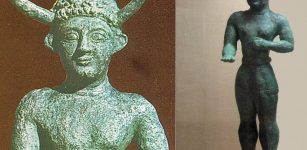 Old Kingdom Of Alashiya And City Of Enkomi With Roots On The Island Of Cyprus
Civilizations | Mar 1, 2018
Old Kingdom Of Alashiya And City Of Enkomi With Roots On The Island Of Cyprus
Civilizations | Mar 1, 2018 -
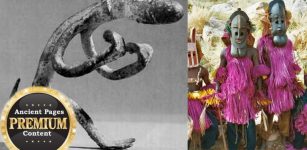 Did The Dogon Tribe Have Knowledge Of Theoretical Physics 5,000 Years Ago?
Civilizations | Aug 2, 2017
Did The Dogon Tribe Have Knowledge Of Theoretical Physics 5,000 Years Ago?
Civilizations | Aug 2, 2017 -
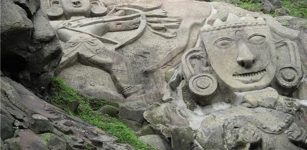 Mysterious Ancient Sculptures Of Unakoti And The Curse Of God Shiva
Featured Stories | Jul 18, 2017
Mysterious Ancient Sculptures Of Unakoti And The Curse Of God Shiva
Featured Stories | Jul 18, 2017 -
 Rudra – Mighty Hindu God Of Death, Destruction, Hunting Who Heals Mortal Diseases
Featured Stories | Aug 10, 2021
Rudra – Mighty Hindu God Of Death, Destruction, Hunting Who Heals Mortal Diseases
Featured Stories | Aug 10, 2021 -
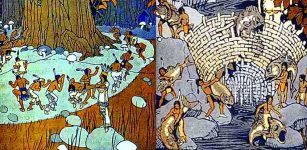 Yehasuri – Little People Of South Carolina Living In The Woods – Native Americans’ Version Of Leprechauns
Featured Stories | Feb 26, 2019
Yehasuri – Little People Of South Carolina Living In The Woods – Native Americans’ Version Of Leprechauns
Featured Stories | Feb 26, 2019 -
 Goddess Huitaca – Moon Goddess Of Intoxication, Joyful Life And Unlimited Pleasures In Muisca Mythology
Featured Stories | Mar 14, 2021
Goddess Huitaca – Moon Goddess Of Intoxication, Joyful Life And Unlimited Pleasures In Muisca Mythology
Featured Stories | Mar 14, 2021 -
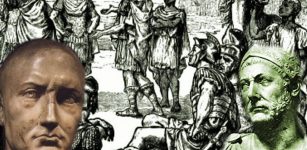 Scipio Africanus – Rome’s Greatest General Who Defeated Unbeatable Hannibal
Featured Stories | Aug 5, 2021
Scipio Africanus – Rome’s Greatest General Who Defeated Unbeatable Hannibal
Featured Stories | Aug 5, 2021 -
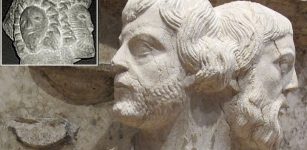 Two-Faced Great Roman God Janus – Symbol Of All Beginnings And Endings
Featured Stories | Apr 9, 2021
Two-Faced Great Roman God Janus – Symbol Of All Beginnings And Endings
Featured Stories | Apr 9, 2021 -
 Mysterious Enormous Underground Labyrinth Of Egypt Holds Secrets Kept From The Outside World
Featured Stories | May 29, 2014
Mysterious Enormous Underground Labyrinth Of Egypt Holds Secrets Kept From The Outside World
Featured Stories | May 29, 2014 -
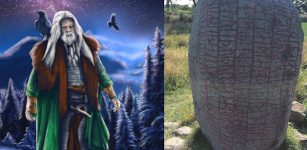 Runes: Facts And History About Odin’s Secret Language
Ancient History Facts | Jan 27, 2016
Runes: Facts And History About Odin’s Secret Language
Ancient History Facts | Jan 27, 2016 -
 What Rights Did Viking Women Have?
Ancient History Facts | Mar 19, 2021
What Rights Did Viking Women Have?
Ancient History Facts | Mar 19, 2021 -
 Unexplained Mystery Of The Ship Of Horror – An Unsettling Story
Featured Stories | Aug 22, 2024
Unexplained Mystery Of The Ship Of Horror – An Unsettling Story
Featured Stories | Aug 22, 2024 -
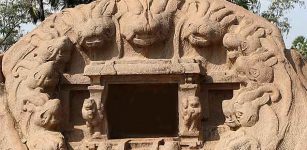 Tiger Cave: Rock-Cut Hindu Temple Complex Dated To East India’s Pallava Empire
Featured Stories | Jan 19, 2017
Tiger Cave: Rock-Cut Hindu Temple Complex Dated To East India’s Pallava Empire
Featured Stories | Jan 19, 2017 -
 Mysterious Magical Healing Gift Of The Whisperers – Meet The Enigmatic Szeptunka
Featured Stories | Feb 10, 2025
Mysterious Magical Healing Gift Of The Whisperers – Meet The Enigmatic Szeptunka
Featured Stories | Feb 10, 2025 -
 A Great Flood Destroyed The Mysterious Ancient City Of Petra – Evidence Has Been Found
Archaeology | May 12, 2017
A Great Flood Destroyed The Mysterious Ancient City Of Petra – Evidence Has Been Found
Archaeology | May 12, 2017 -
 Catherine De Medici – Queen Of France Supported Nostradamus, Was Suspected Of Poisoning And Blamed For Horrible Massacre
Featured Stories | Dec 17, 2018
Catherine De Medici – Queen Of France Supported Nostradamus, Was Suspected Of Poisoning And Blamed For Horrible Massacre
Featured Stories | Dec 17, 2018

